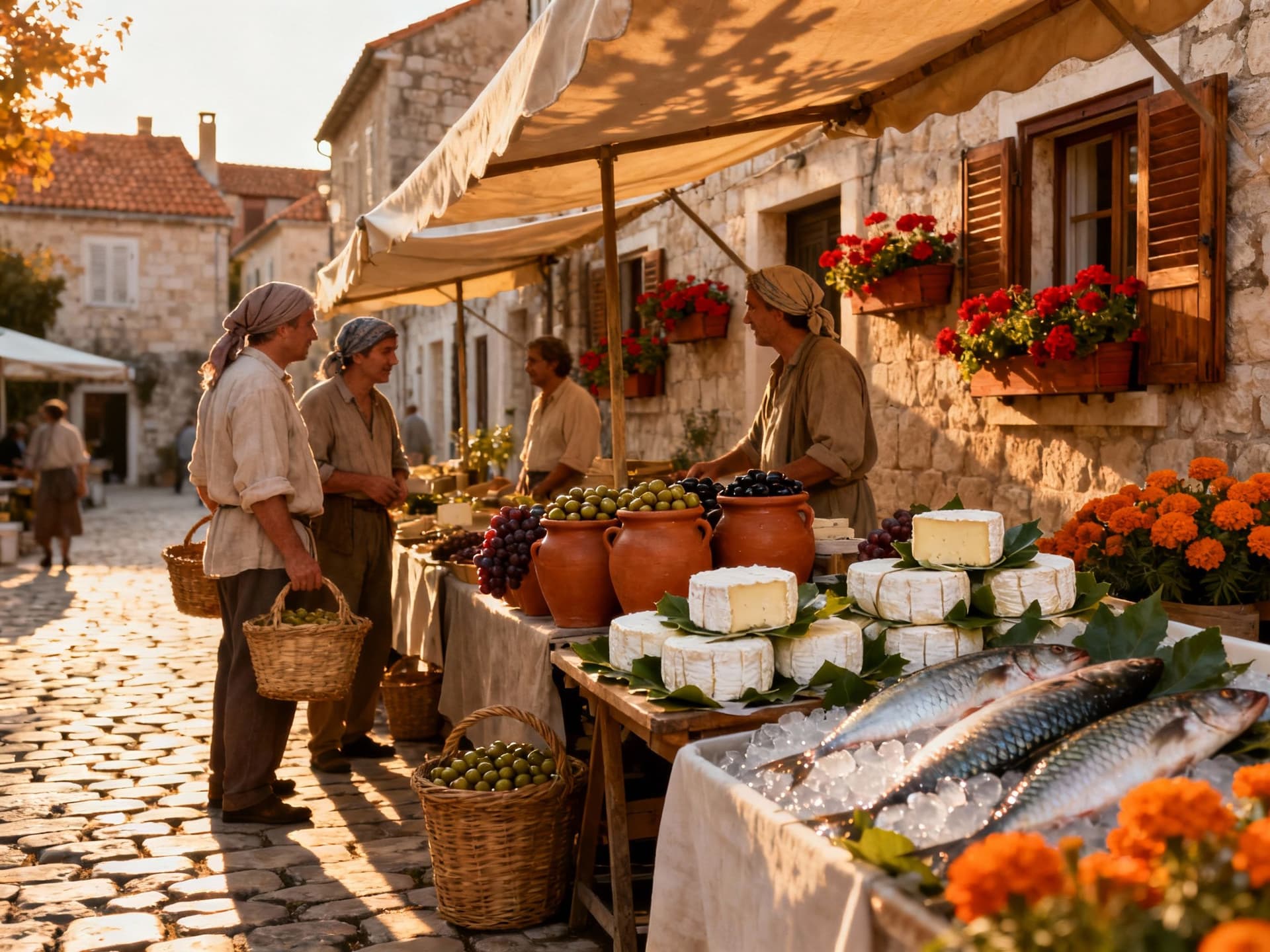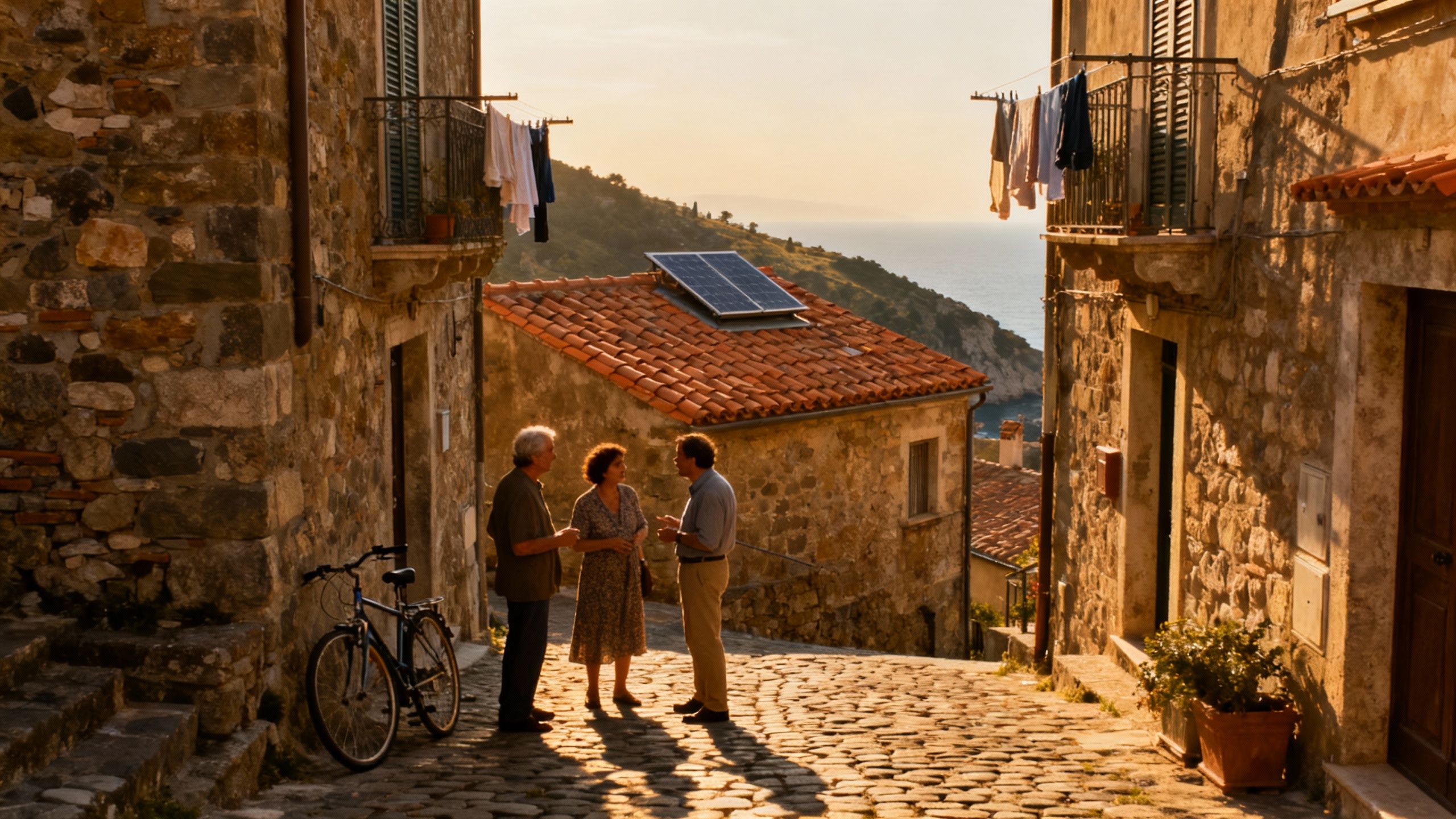Croatia: Seasons, Stewardship and Smart First Steps
Fall in love with Croatia’s seasons — from Istrian truffle mornings to Adriatic evenings — and pair that lifestyle with actionable steps, legal essentials and local data for conscious buying.
Imagine stepping out of a stone courtyard onto a sun-warmed street where the scent of espresso and grilled fish mixes with salt air — that is Croatia in a day. From the pine‑fringed coves of Hvar to the limestone alleys of Dubrovnik’s Old Town and the truffle‑dusted kitchens of Motovun, this country moves slowly around the pleasures of sea, soil and season. For international buyers drawn by light, harvests and a life lived outside, Croatia feels like a place to belong. But loving a place and buying there are different acts; the first is breath, the second is paperwork, timing and local rhythm. Here’s a companion that starts with the love and ends with clear, practical steps — always with an eye for low‑impact living and neighbourhood stewardship.
Living the Croatia life: days that slow and deepen

Picture mornings in Zagreb’s leafy Lower Town drinking cafe crema at Cogito Coffee or promenading Tkalčićeva; afternoons wandering Split’s Riva before slipping into the shade of Marjan Hill; evenings in Istria tasting extra‑virgin olive oil at Konoba Batelina or joining a Motovun truffle feast. Croatia’s rhythm is local markets, neighbourly lunches, and an admiration for seasonality — olive harvests in November, grape pressing in October, and truffle hunting from autumn into early winter. These rituals shape not only lifestyle but how a home can feel lived‑in, regenerative and connected to place.
Neighborhood spotlights: the places that breathe life
Coastal charm: Split’s Veli Varoš and Bačvice offer salt‑air mornings and a tight social scene where neighbours know one another; Dubrovnik’s Ploče is quieter after hours and good for buyers who want proximity to heritage with private terraces that face the sea. Inland: Rovinj’s Old Town and Istria’s hilltop villages like Motovun are for food‑minded buyers seeking terroir and community. Zagreb’s Maksimir and Britanski trg bring urban parks and cultured cafés, while the islands (Brač, Vis, Korčula) are for slow summers and off‑grid ambitions. Each area brings a different daily score — markets, ferry schedules, village bakeries — that will govern your routines.
Food, festivals and seasons that shape where you live
If you fall for Croatia via taste, Istria is transformative: truffle season (September–December) alters calendars, restaurants and property desirability — a hilltop house near Motovun suddenly feels like a year‑round refuge. Summer brings a different pulse: Adriatic islands become social magnets from June to September, which affects noise, rentals and local services. If quiet, biodiverse living matters, seek communities where year‑round residents outnumber short‑term visitors.
- Marketable lifestyle highlights: • Motovun and Livade (Istria) — truffles, oak forests and small‑scale agritourism. • Split (Veli Varoš, Mejaši) — daily fish markets, short ferries to islands, active expat cafés. • Dubrovnik (Ploče, Lapad) — historic walls, sheltered coves, quiet winter months. • Brač and Vis — olive groves, wind‑tempered microclimates, long‑term privacy. • Zagreb (Maksimir, Donji Grad) — parks, museums and an urban community rhythm.
Making the move: practical considerations woven with lifestyle

The romantic map meets bureaucracy at the notary’s door. EU/EEA/Swiss citizens generally buy under the same conditions as Croatians; non‑EU buyers typically need ministry approval under a reciprocity principle. This isn’t an abstract hurdle — it affects timing, whether you can buy agricultural plots, and whether you should consider forming a Croatian company to simplify acquisition. Work with a lawyer and an agent who know these local contours so your property choice matches the life you envision, not just a picturesque facade.
Property styles and how they shape daily living
Stone Adriatic villas with thick walls keep summers cool and pair naturally with passive design; historic townhouses demand sensitive retrofit (insulation, double glazing) to become year‑round homes. New builds can offer heat pumps, solar readiness and greywater systems but often lack the charm of traditional materials. Choose the type that suits your seasonality: if you plan long winter stays, prioritise thermal comfort and energy systems; if you want a summer retreat, focus on outdoor living and natural shading.
Working with local experts who protect both lifestyle and value
- Steps to pair lifestyle intent with sound local advice: 1. Define the life you want (daily routines, season length, community needs) before viewing properties. 2. Hire a Croatian lawyer familiar with reciprocity and land registry checks to avoid surprise encumbrances. 3. Ask agents about neighbourhood seasonality, long‑term resident ratios, and local services (doctors, schools, ferries). 4. Inspect energy features: insulation, solar potential, water storage and local waste rules. 5. Consider renovation costs and local craftsmen — traditional stone repairs often preserve value and biodiversity. 6. Factor in municipal proposals (new property tax frameworks may affect coastal short‑term rental economics).
Insider knowledge: the expat truths no brochure will tell you
Real talk: Croatia’s house prices rose noticeably into 2024, with the national house price index showing double‑digit annual growth in some segments, while the government is experimenting with property taxes to discourage short‑term holiday stockpiling and ease housing pressure. That means coastal buyers confront both buoyant demand and new municipal rules. Read the local statistics, and ask whether a seaside purchase will be a community asset or part of a transient rental cycle.
Cultural and seasonal realities that change how you live
Language softens quickly with curiosity: a few Croatian phrases open doors. Neighbourhood rituals — long lunches, Sunday markets, late summer festivals — create relationships that make maintenance, local hiring and stewardship easier. Also, winter is not empty: many towns quiet down but grow community life; if you value neighbours over nightlife, that’s a good thing. If you love constant activity, accept that the high season is intense and plan properties with good ventilation, shading and privacy.
Why seasonality can be an advantage: buy during off‑peak moments like late autumn after truffle festivals and harvests, when you can inspect how a village feels outside tourist surges. This is when you’ll meet year‑round shopkeepers, hear the true cadence of ferry timetables, and discover whether a local school or clinic fits your life.
- Practical red flags and eco‑minded checks: • Short‑term‑rental saturation on a street — look for many separate Airbnb listings. • No planning permits for extensions or seawalls — check municipal archives. • Poor thermal performance in older stone houses — estimate retrofit costs. • Water access and quality for off‑grid ambitions — confirm well rights and municipal supply. • Protected coastal zones where construction is restricted — verify with spatial plans.
Conclusion: Croatia gives you a life that feels like an act of attention — to food, to season, to neighbours — and buying there asks you to keep that attention in practice. Start with the life you want (which neighbourhood, what seasons, how you’ll steward the land), then line up a local lawyer, an agent versed in sustainable retrofit, and municipal plan checks. Visit in both high and low seasons, taste the truffle months in Istria, test the ferry timetables on the islands, and let data — from the Croatian Bureau of Statistics to municipal spatial plans — guide the practical steps. When you combine a heartfelt love of place with careful, locally anchored due diligence, your Croatian home will be both beautiful and resilient.
Swedish advisor who left Stockholm for the Costa Brava in 2019. Specializes in sustainable, sea‑view homes for Scandinavian buyers and green finance insights.


